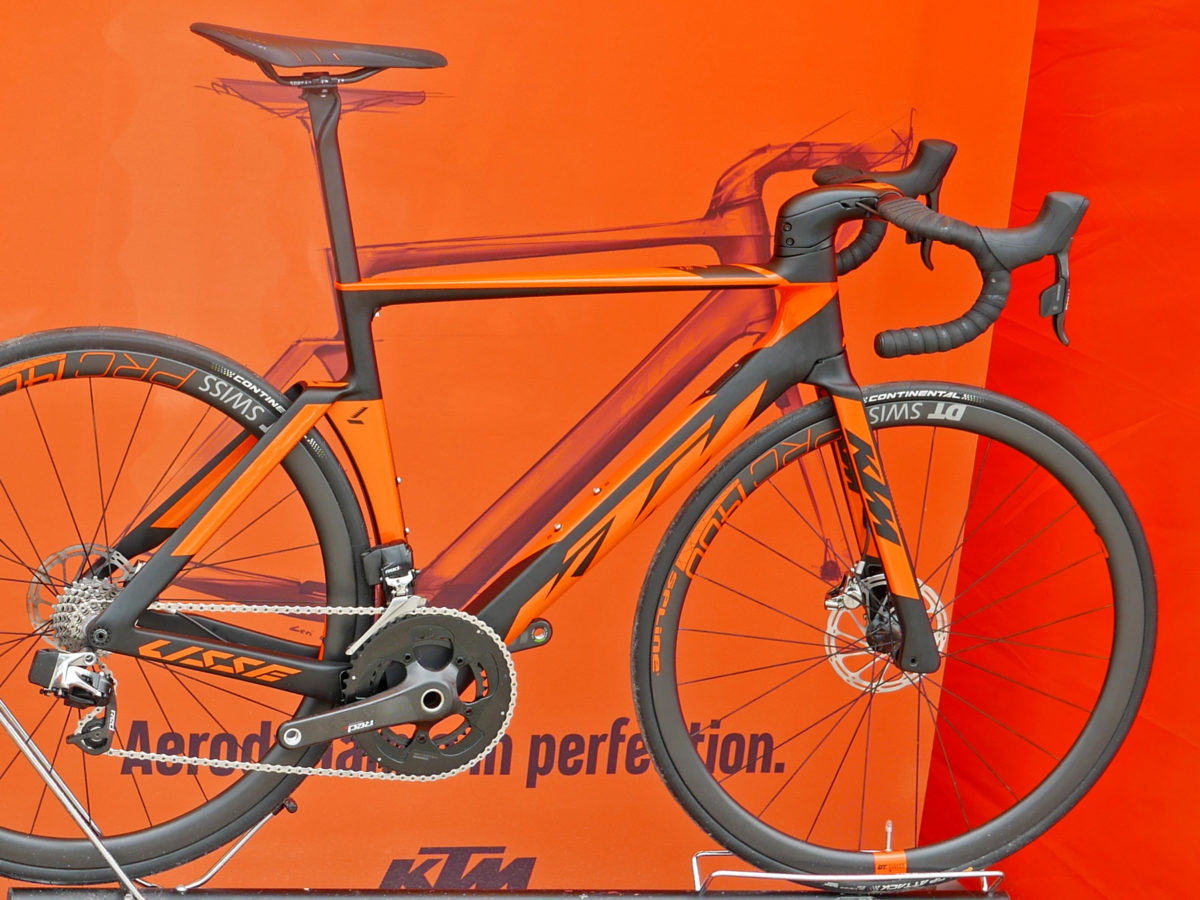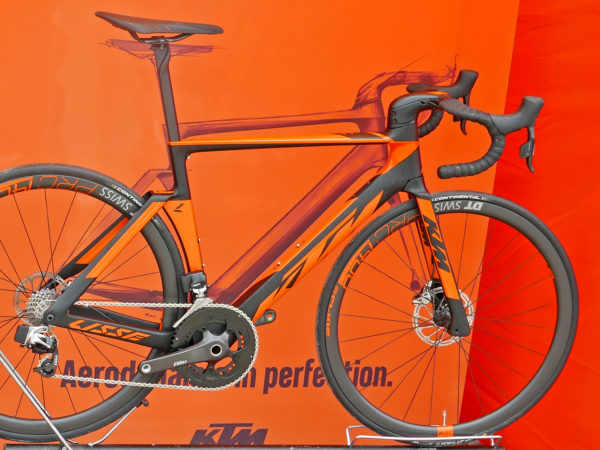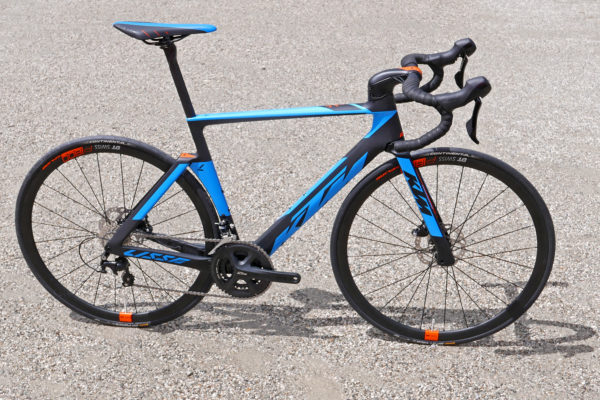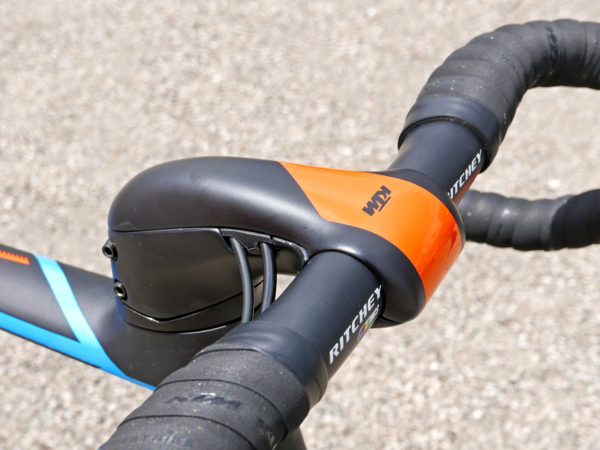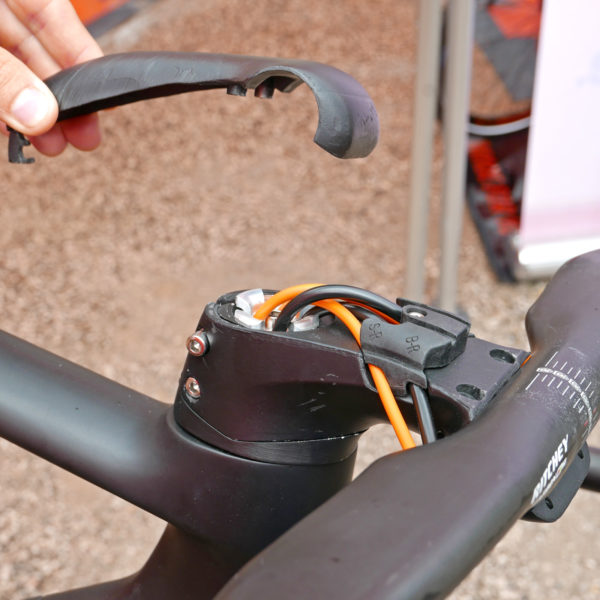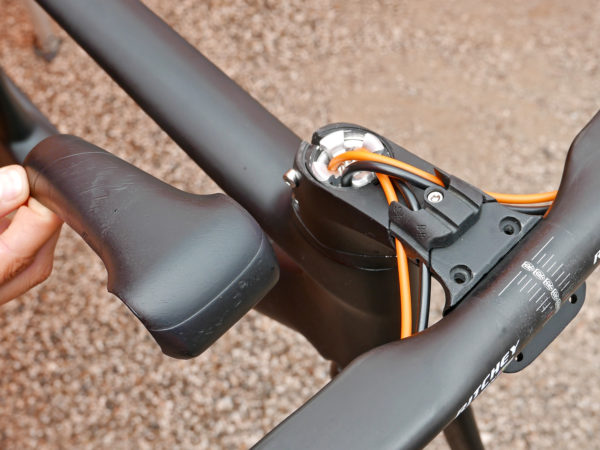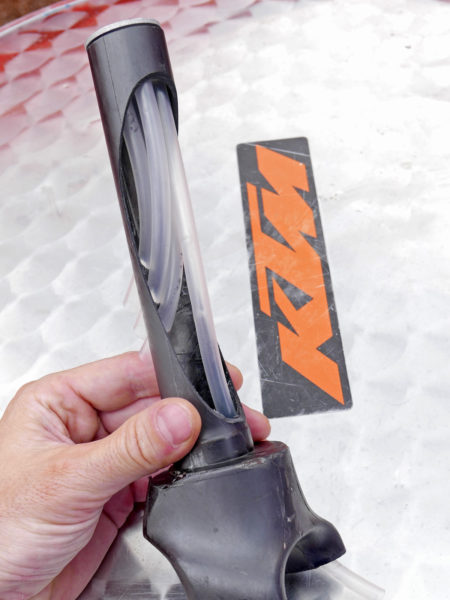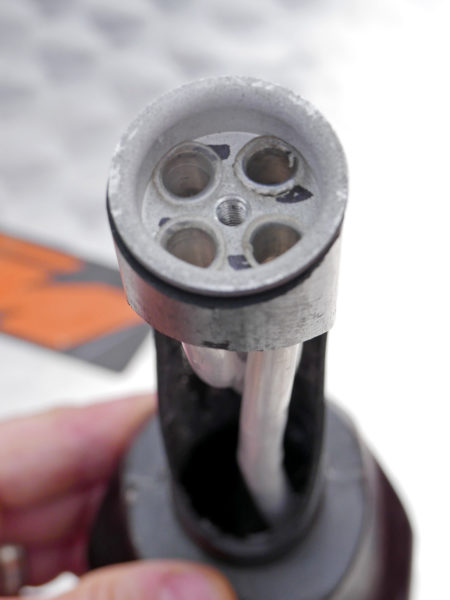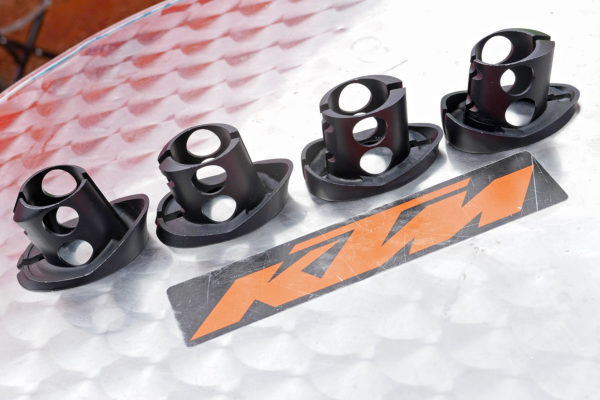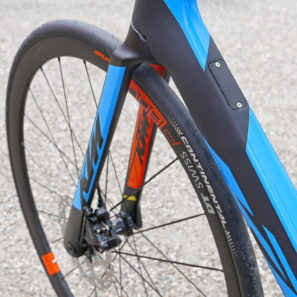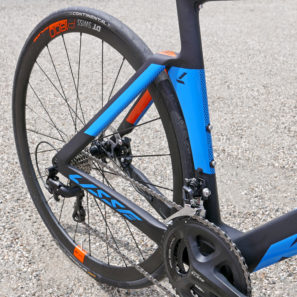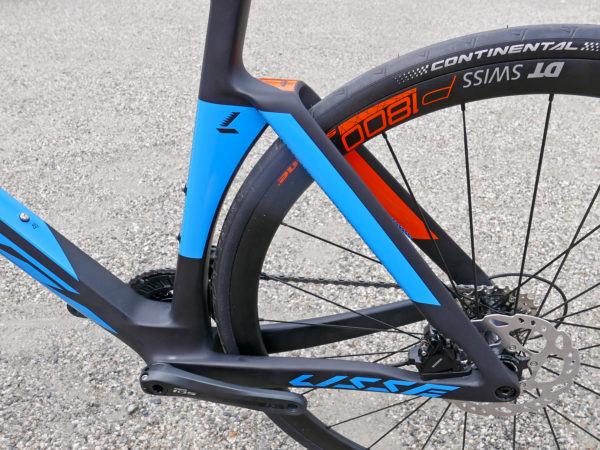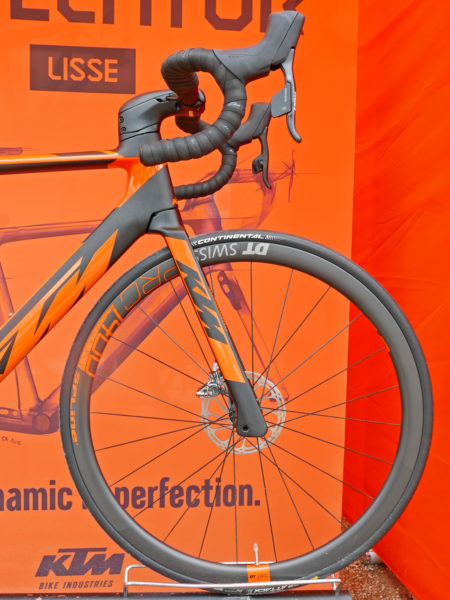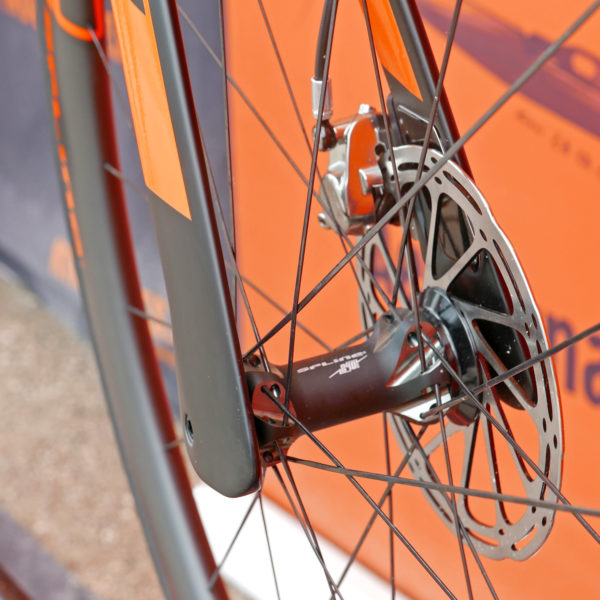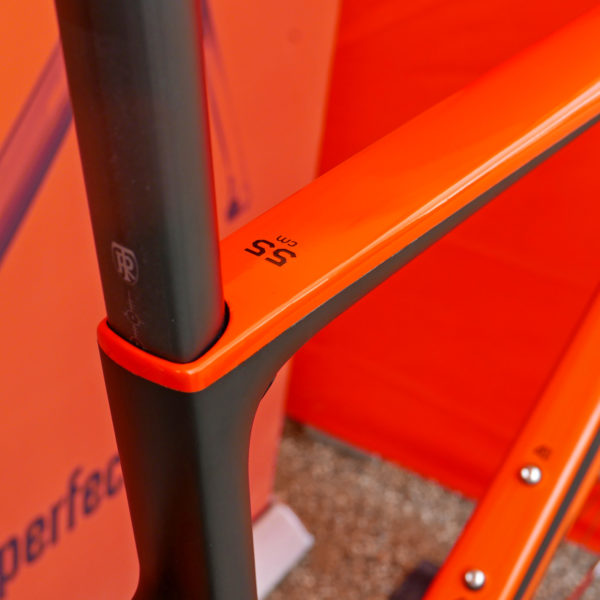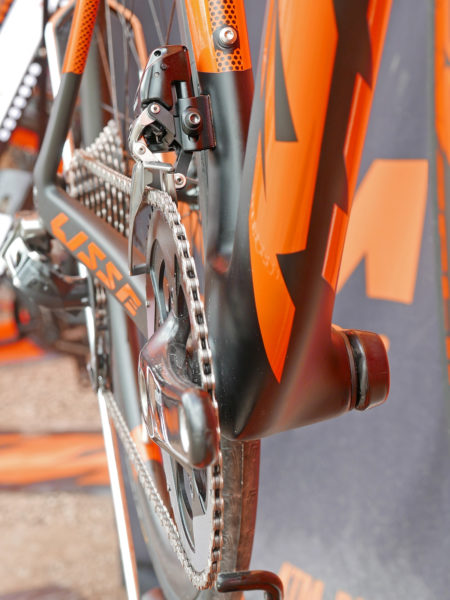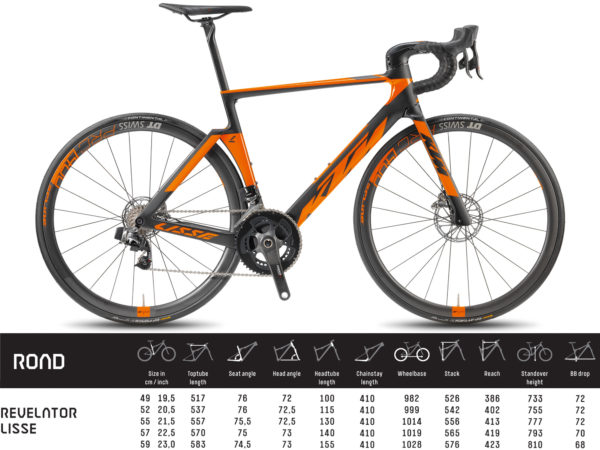KTM introduced the Lisse aero road bike as a concept last fall where we got a first look from Eurobike. The details were a bit thin at the time, other than disc brakes and fairly dramatic aero tube shaping. Almost a year later the bike has been revealed, and there are few changes to what is now the production-ready KTM Revelator Lisse aero road bike. But with a closer look, we reveal some interesting new tech that makes for a relatively easy-to-manage setup for completely internal cable routing even with mechanical drivetrains and a unique steerer tube spacer design that allows you to adjust the height of the bar without impacting those neatly integrated cables…
The Lisse is the latest bike to join KTM’s Revelator family of road bikes and is more of an all around solution that most of their other bikes. That is in large part due to the move to disc brakes across all road segments that has allowed the industry to pursue aerodynamics at the same time as getting better braking, more optimized carbon layups for that balance of drivetrain stiffness but rider comfort, and the extra room to ride fatter road tires that can be adapted to a wider range of road conditions.
From an aero standpoint KTM looked beyond just the aerodynamics of the frame & fork to see what really could most benefit on the total bike. They actually came to the conclusion that reducing turbulent wind was maybe the most important aspect of aero design. And only then could they really benefit from optimized frontal area and tubing profiles. Of course that led KTM first towards front end integration.
As KTM put it to us integrated cable solutions are pretty much a benchmark in the aero road bike category now. So they took that as an opportunity to explore a better solution for not just improved aerodynamics but also a more reasonable setup and real world usability.
The result is a unique stem that clamps the handle bar with a removable top plate that also builds into it a tidy cable routing setup. Two cables enter either side of the carbon stem via smooth bends that will work with even mechanical shift housing & hydraulic brake lines, and get held in place with a simple internal clamp (labeled for easy setup, ie. S-R for shifter-right), before being routed into the fork steerer.
It does not require any special handle bar. And the cables can be routed directly from behind the bar with a normal radius, while still staying completely out of the wind.
Inside the special full carbon steerer tube of the Lisse fork (shown here with a front cutaway window for demonstration purposes only) molded in plastic tubing guides each cable to its destination. The front brake stays inside the fork all the way to the dropout, while the rear brake & shift lines exit into the large downtube. Of course a special (not) star nut/steerer plug is needed, so the Lisse fork gets an alloy plug bonded in that lines up the routing and works with a special slotted top cap that ultimately gets covered over by the stem’s top plate.
The other unique technology to the Lisse’s integrated stem is the way that bar height is adjusted. Since using a normal set of spacers under the stem would require the variable height of the steerer tube (remember above that the steerer’s top cap gets covered up by the stem, so the steerer tube must be cut to size at the factory where the steerer plug can be bonded in) KTM has an alternate method to adjust bar positioning. The four spacers above (plus the standard 0 one installed on the bike in the photos above) allow the rider to move the bar up or down in roughly 5mm increments on a typical 100mm stem (the longer the stem, the more adjustment).
It works as you can see above where the angle between the top of the headset (the flat table in the pic above) & the steerer tube (the inner hole in the spacers) remains the same, but the outer diameter that the stem actually clamps to changes, as do the angles of the lower extensions of the spacer that meet the overall outer shape of the stem. Besides providing the absolutely necessary ability to adjust handle bar height (or more clearly, bar stack), it also results in a clean solution where cable length for the internal setup is not impacted by altering bar height.
We already notices the widely set fork legs and squared off fork crown when we previewed the bike last year, which claim to reduce turbulence where the top part of the rim, tire & spokes are spinning forward against the wind. The fork design then transitions smoothly into a wide truncated aerofoil downtube. That in turn houses a modular cable access port to aid in setting up the internal routing, but can also be used to locate a Di2 junction box.
Looking further to the claimed 1000g frame & 480g fork, the Lisse includes most of the same details we find on the majority of top-level aero road bikes these days. That means dropped seatstays – which again get widely set to allow airflow over the forward spinning wheel – plus a deep wheel cutout and tall but thin aero shaped stays.
The Lisse fork continues some unique shaping with a teardrop extending just behind the 12mm thru-axle to smooth airflow over the fork tips. And at the front edge of the legs they taper to slice into the wind.
KTM is co-title sponsor for a French Pro Continental team, so sticking to UCI guidelines was always a driving force for the Lisse development. We didn’t see UCI approval stickers on the bikes yet, but they did find their way onto the approved list as of the latest 21 June 2017 UCI update. So they should be turning up in the pro peloton once the riders get their heads out of their… more accustomed to improved braking.
The Lisse uses a proprietary D-shaped seatpost, produced for them by Ritchey, and clamped with an expander wedge accessible from under the toptube. Looking at the aerodynamics of the bike, the Lisse is very much asymmetrical allowing air to flow more smoothly to the less turbulent non-driveside around the lower downtube and Press Fit bottom bracket area.
The Revelator Lisse will be available later this year in two complete bike builds that share the same 85% 30T, 15% 24T carbon frameset. The Lisse Prestige will come in classic KTM orange & black with a SRAM Red HRD eTap groupset and DT Swiss PRC1400 wheels. The second Lisse Elite gets a blue & black paint job with a Shimano 105 mechanical groupset still with hydraulic braking and down spec’d to DT P1800 spline wheels.
Both bikes will be available in the same five size range with effective seattubes from 49-59cm, from your local KTM bikes dealer.
